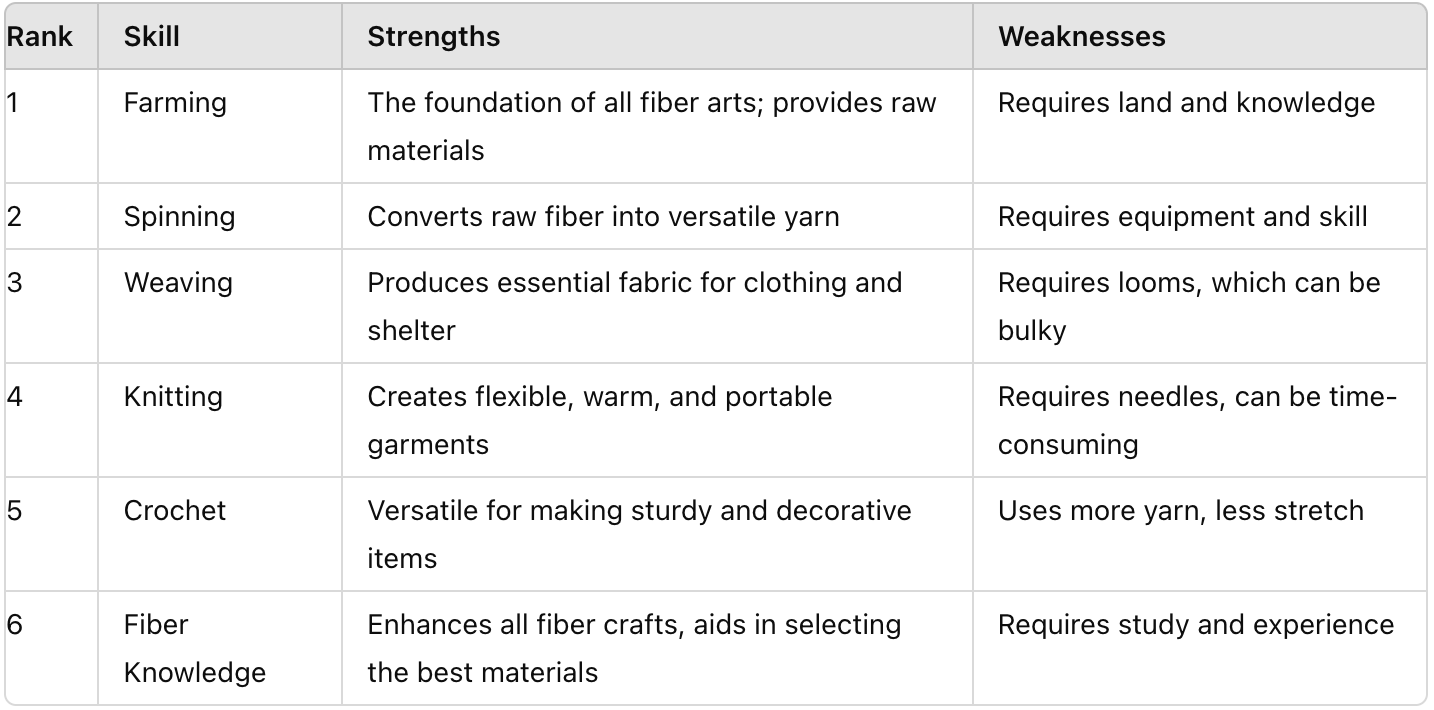Fiber Arts Face-Off: Which Skills Will Save You in the Apocalypse ?
With the upcoming presidential election looming, the air is thick with tension. Many Americans are convinced that if their candidate doesn’t win, it might just spell the end of days. While these beliefs might be extreme, it does spark an interesting thought experiment: in a post-apocalyptic world, which fiber art skills and fibers would come out on top?
Farming: The Ultimate Fiber Source Showdown
In a world where you can't simply run to the store for supplies, farming your own fiber sources becomes the bedrock of self-sufficiency. Whether you’re cultivating crops or raising livestock, having control over your fiber production ensures a steady supply of materials for all your fiber arts needs. Here’s how the contenders stack up:
Raising sheep provides wool, a fiber renowned for its warmth and versatility, making it ideal for everything from clothing to insulation. Cotton, while needing a warm climate and abundant water, offers a soft and breathable option for everyday garments. Flax plants yield linen, which is incredibly durable and quick-drying, but processing it requires significant effort. Hemp plants, with their robust and eco-friendly fibers, are easy to grow and maintain, though their coarser texture limits their use in fine garments.
Fiber Types: Battle of the Best
Understanding the unique properties of different fibers is key to making the right choice for each project. Knowing which fiber suits your needs can make a significant difference in functionality and comfort. Here’s the face-off:
Wool stands out for its insulating and moisture-wicking properties, making it perfect for staying warm and dry. Cotton's softness and breathability make it a favorite for everyday wear, though it doesn't provide much warmth. Linen is appreciated for its strength and quick-drying nature, ideal for hot and humid environments, despite its tendency to wrinkle. Hemp is incredibly durable and environmentally friendly, suitable for tough, long-lasting items, though it can feel coarse against the skin.
Spinning: The Spin-Off
Spinning transforms raw fibers into yarn, the building block for all fiber arts. Mastering spinning techniques ensures a continuous supply of yarn, tailored to the needs of each project. Here’s how different spinning skills measure up:
Wheel spinning, with its speed and efficiency, allows for the production of large quantities of yarn, making it indispensable for big projects. However, spinning wheels can be hard to come by and require maintenance. Drop spindle spinning, on the other hand, is portable and easy to make, perfect for creating fine yarns on the go, though it is slower and more labor-intensive.
Weaving: The Fabric Face-Off
When it comes to producing fabric, weaving is the go-to method. It transforms yarn into versatile fabrics for clothing, blankets, and more. Here's the breakdown:
Floor loom weaving allows for the quick production of large quantities of fabric with intricate patterns, essential for making clothing and shelter. However, floor looms are bulky and require significant space. Table loom weaving offers a more compact solution while still allowing for versatile patterns, though it is limited in fabric width and slower. Backstrap weaving is highly portable and cost-effective, perfect for narrow, sturdy fabrics, but it is labor-intensive.
Knitting and Crochet: Head-to-Head
Knitting and crochet are versatile crafts that can be done almost anywhere. They offer unique benefits for creating a variety of items, from clothing to home goods. Let's see how they stack up:
Knitting excels in producing stretchy, warm garments, making it efficient for clothing. It requires needles and can be slower for larger items, but the results are highly functional and comfortable. Crochet, while using more yarn, is versatile for creating sturdy and decorative pieces and is easy to learn. It may be less flexible than knitting but is ideal for quick, durable projects.
Final Showdown: The Ultimate Fiber Art Skills
Combining all aspects, here's the ultimate ranking of fiber art skills in a post-apocalyptic world:
Conclusion
While the political climate might be tense, it's enlightening to consider which fiber arts skills would reign supreme in a post-apocalyptic world. Whether or not we ever face such drastic circumstances, honing these skills can bring joy, creativity, and a sense of preparedness to our lives. So, pick up those shuttles, hooks, or spindles, and start crafting your way to a self-sufficient future!
By Trent, your fellow crafter and creator of The Weft Wright, sharing the joy of fiber arts from my cozy studio in the mountains of western North Carolina.







